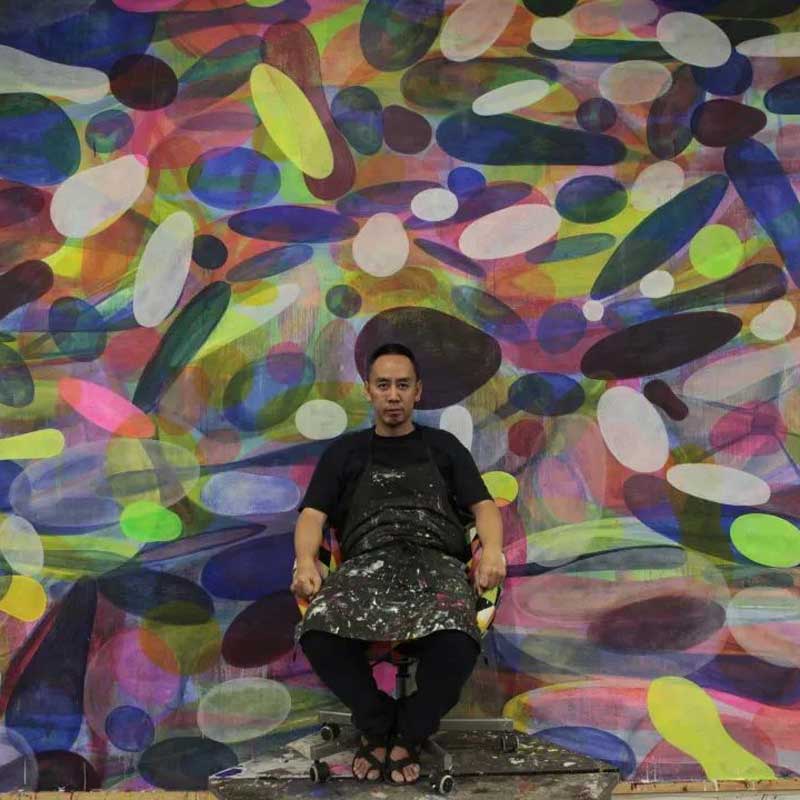1975年出生于北京,2000年毕业于中央美术学院壁画系,2015年作为「余德耀美术馆项目空间」首位受邀艺术家,现工作生活于北京。黄宇兴的绘画并不受制于某一个理想形象的规定,却是从绘画内部自然生长出来的。
从他最早期的实践直到现在,水、漩涡、树林、矿石、晶体乃至建筑均是他钟爱的主题。即便他从未忠实地再现这些意象的形象,但他也没有完全抛弃现实世界中的物象。甚至还试图还原这些物体给人们造成的心理印象─在一条河流面前,人们常常会出神,不自觉地发起呆来。作品中的斑斓色彩,也能让观众们沈浸在类似的精神状态之中。而与法国印象主义点描派不同的是,黄宇兴并未被动地等待观者们的眼睛混合那些纯色,而是主动地通过一层层的叠加和一遍遍的调整,最终达到自己满意的状态。如此地设置绘画进程,旨在激发绘画内在的活力。色彩、形状和构图的被动调整牵引着艺术家的行动,令他无暇停歇地应对,而在这一过程中,绘画获得了鲜活而自足的生命和不断生长的主动性。
Born in Beijing in 1975, he graduated from the Department of Mural Painting at the Central Academy of Fine Arts in 2000. In 2015, he was honoured to showcase his exceptional works at the prestigious Yuz Museum Project room titled Liquidus. Huang’s artistic expression surpasses the confines of a predefined ideal image, instead blossoming organically from within his paintings.
Throughout his career, he has consistently found inspiration in various elements such as water, whirlpools, forests, minerals, crystals, and architecture. While he does not strive for a precise naturalistic representation of these objects, he does not wholly abandon their real-world forms. Instead, he endeavours to reconstruct the impressions they evoke. For instance, when confronted with a river, people often find themselves lost in contemplation, seemingly empty-minded. Huang employs colours on his canvases that engross the viewer in a similar sense of emptiness. However, in contrast to the Pointillism technique of the Post-Impressionists, Huang actively overlaps and meticulously adjusts the colours until he achieves his desired level of satisfaction. This process aims to evoke the energy emanating from his paintings and is an integral part of his creative journey. The modification of colours, shapes, and compositions captures the artist’s attention, constantly engaging him in a perpetual cycle of refinement. Through this process, the painting gains a vibrant and self-sufficient life, serving as a catalyst for continual growth.



